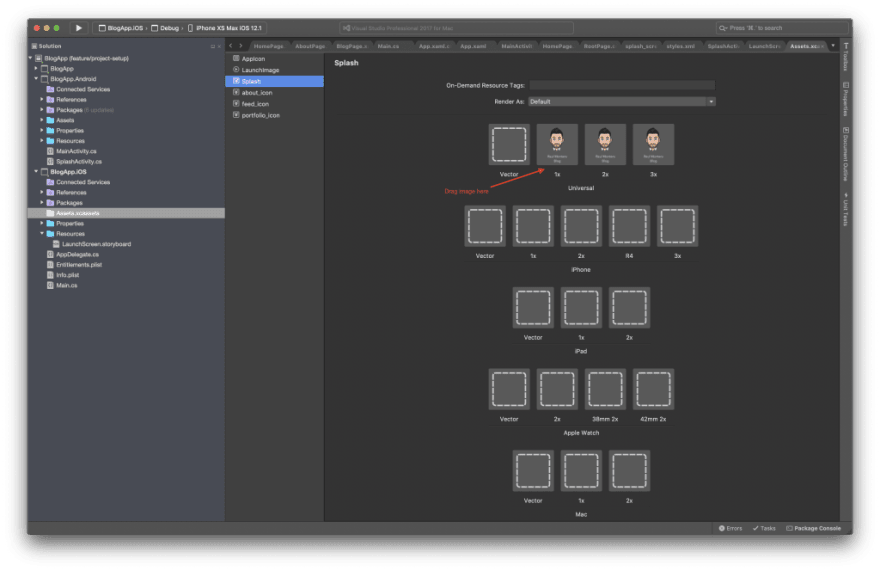

- Xamarin appicon transparent how to#
- Xamarin appicon transparent install#
- Xamarin appicon transparent for android#
The response is currently set for XML, as my Universal Windows App requires specific formatting. Super simple! I’d already built one Logic App, so I just chose to reuse that as it already included all the functionality. The custom API is actually a Logic App, that returns the latest temperature reading from my Ruuvitag Bluetooth beacon.
Xamarin appicon transparent install#
I built the app on my laptop, so all I needed was a fresh install of Visual Studio 2019, and to tick the box for Mobile development: I chose to use Xamarin.Forms as the learning curve seemed to be not as steep, and I could rely on the basic components available via the framework. There’s a great thread on Stack Overflow on the differences, pros, and cons of these two. I’m often seeing these two variants of Xamarin being called Xamarin Native and Xamarin.Forms. These controls are based on XAML, a declarative markup language, that looks a bit like XML. Xamarin.Forms, then, is a subset of controls that target Android, iOS, and Windows Phone. You use Xamarin through Visual Studio, essentially. Microsoft acquired Xamarin in early 2016, and during Build 2016 announced it would be free for all.
Xamarin appicon transparent for android#
As Microsoft describes it, it’s a free, cross-platform and open-source app platform to build for Android and iOS, using.

Xamarin, then, is something I haven’t spend much time on. Using Microsoft’s Power Apps (part of Power Platform) is also a great option, but that gives very little in terms of learning to build a native app. I’m vaguely familiar with Ionic Framework, and I’ve understood many ISVs rely on it for their custom business apps.
Xamarin appicon transparent how to#
I’ve been wanting to see how to build apps for Android, and this gave me the perfect opportunity. It’s been my go-to mobile OS for several years (and I did try iOS briefly), and I mostly resort to web frontends and custom APIs than native apps. I’ve never really built anything for Android. I needed to solve this, so I set out to build a custom mobile app for my Android phone, that gets those temperature readings from the cloud. While sitting by the lake enjoying the scenic Finnish summer, I came upon yet another need: I couldn’t monitor the temperature of my hardware cabinet without opening my laptop, and remoting to my home server (to view the temps on the Windows app). Both of these solutions work well, even if they are very prototypey’ish and mostly a learning experience for me. I then expanded upon this solution slightly this year, by leveraging the data I already ingest and exposing that for a custom Universal Windows Platform app. I rely on this solution to wirelessly measure the temperatures in my hardware/gadget cabinet and to push those readings to Azure.

You might recall from last year when I built a custom Azure-integrated temperature monitoring system using the Ruuvitag Bluetooth beacon and Azure IoT Hub. Lots of natural light means lots of productivity, also! The sun rises at 3:45 and sets around midnight. For us, it includes the longest day of the year: This past weekend Finland (and Sweden, that I know of) celebrated the midsummer’s eve. Thanks for reading my blog! If you have any questions or need a second opinion with anything Microsoft Azure, security or Power Platform related, don't hesitate to contact me.


 0 kommentar(er)
0 kommentar(er)
